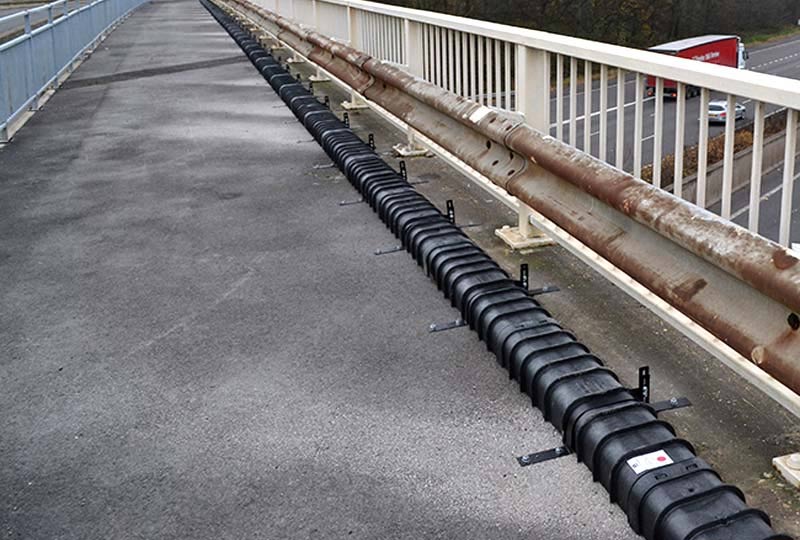Smart cities sound like a great idea — who wouldn’t want your city to be smart, or at least smarter? — but it usually involves lots of digging. What if we could have the sensors that make cities smart, without the holes?
Sensors need to be lain in the ground, or on street furniture, and often cables lain to connect them. This means more holes, which is something residents don’t like. A mayor in the Indian state of Goa threatened to seize the equipment of the local smart city corporation, Imagine Panaji Smart City Development Corporation Ltd, in May after they ignored the city’s ban on digging up its streets. (India is in the throes of developing 100 smart cities and is trying to come up with alternatives to the chaos wrought by digging — the city of Dehradun is proposing a ‘multi utility duct’ (see illustration) to house electricity cables and telephone cables. “This will avoid frequent digging roads for connections and repair of telephone cables.” Not a pretty solution, I have to say.)
Anyway, for those cities that already have broadband fibre lain in the ground, Verizon has an interesting solution: converting these fibre cables into sensors using a technology called optical fibre sensing. Optical fibre sensing is used for monitoring power cables, tunnels, mines, railways and dams for fires, temperature, strain, rupture — or even for whether someone violates a perimeter. But they require laying purpose-built cable, usually close to the surface.
Verizon and NEC said this week they had used software and AI to monitor traffic — including density of vehicles, direction, speed, acceleration and deceleration — on Verizon’s existing communications cables. Purpose-built optical fibre has long been used for sensing but this, the two companies say, is the first time it can do both — carrying high speed data, while also performing sensing.
The technology needn’t just be used for traffic: the companies say it could also “support public functions such as helping first responders detect and respond to gun shots and enhancing municipalities’ ability to more quickly and efficiently identify earlier deterioration of bridges, tunnels and other infrastructure.”
“This test marks an important milestone for technology that could provide a huge leap forward for those building smart cities and those tasked to manage them,” the press release quoted Adam Koeppe, Senior Vice President of Technology Planning and Development with Verizon as saying. “Instead of ripping up tarmac to place road and traffic-sensing technology, cities will be able to simply piggyback Verizon’s existing fiber optic network.”
They’re not the only ones trying to make use of existing fibre without more digging. A British company called OptaSense is developing something called Distributed Acoustic Sensing (DAS) that “enables continuous, real-time measurements along the entire length of a new or existing, single mode fibre optic cable. The fibre optic cable is transformed into a sensor by an Interrogator Unit plugged onto the end of a single unused spare core.” The unit injects a pulse of laser light into the cable which then creates a “virtual microphone” every 10 metres along the cable. The sensor would be able to detect different size vehicles, traffic jams etc. (It wasn’t clear from the Verizon press release whether their solution also required the presence of a similiar unit or some other hardware installation.)
